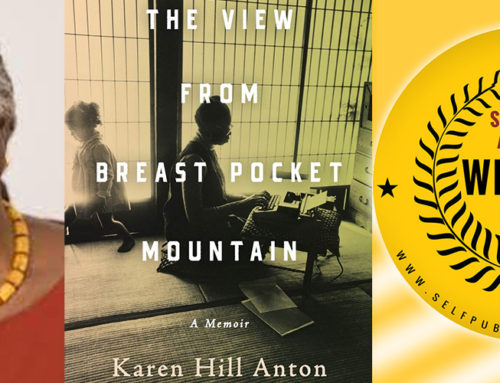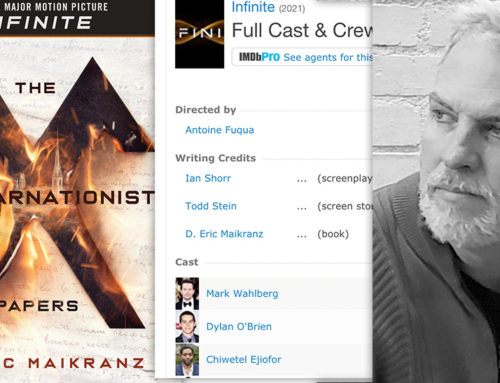 At the start of the year, I had an idea for a project. I wanted to write a serialized fiction story in pieces small enough to fit inside a single Tweet. One tiny chunk of narrative prose every day, slowly building an ongoing, real-time story for the audience to piece together.
At the start of the year, I had an idea for a project. I wanted to write a serialized fiction story in pieces small enough to fit inside a single Tweet. One tiny chunk of narrative prose every day, slowly building an ongoing, real-time story for the audience to piece together.
Then every so often, I’d do something a bit more, something to enrich the story and experience — a full short story perhaps, or an in-character piece of music, or an audio play.
I had several goals in creating a project like this. One was to have a story I could work on a bit at a time, an ongoing thing I could put out there while I worked on larger projects. I wanted to build an audience, utilizing the promise of social media. I wanted to introduce people to my world. And hopefully, I wanted to publish the whole collection at the end.
I launched the project in February, and maintained it for almost four months before pulling the plug. It wasn’t working. But the experience was teaching me a lot, and I felt that the concept still had merit — so I’ve done my best to plug the holes and am re-launching it on November 1st. Here are some of the things I’ve learned.
The Story
This shouldn’t be news. If you’re going to succeed, you need a good story. This I think I have a decent handle on — or at least, most people I pitch it to and my few existing fans seem to like it.
Azrael’s Stop is the story of a mystical tavern where people are led when they’re ready to die. The story centres around the bartender, a 17-year-old boy named Ceph, who’s seen everyone he’s ever been close to die throughout his life. It’s about him finding a way to live again after that much tragedy, when he’s afraid to let anyone close to him. It’s about living with tragedy and moving on.
A story like this has to be chosen very deliberately — especially when being fitted to a very specific method of presentation like I was doing.
Death is universal, transcending culture and belief; everyone must face it. And even if you have not specifically faced the death of a loved one, we all have ghosts in our pasts (so to speak) we must learn to live with.
Were my serialized story a bit longer in form, like the classic pulps or Dickensian stories, I might have chosen something a bit more action-packed, or a bit more plot-heavy, with which I could have a nice cliff-hanger at the end of each instalment to pull the audience to the next. But when I’m talking about a mere few sentences per daily entry, that would just be impractical to say the least. Instead, a more character-driven story allows for a slower pace, the ability to build up an arc over time, with every entry adding a tiny piece to the puzzle.
The story also takes place in the same location with the same few characters, which means I don’t have to constantly describe new places or complex events — we’re in a tavern, and there are a lot of things that can be taken for granted.
Finding an Audience
They say, “build it and they will come.” Well whoever “they” are, are wrong. (“They” are of course the film Field of Dreams, and they were right, but that’s beside the point.) This is something I’m sure a lot of indie writers know or are discovering. The promise of building a story on social media like Twitter is that it is shareable, that your story will spread by word of mouth and go viral. Possible, yes. But not likely.
There’s a critical mass that must be reached before something like that will really take off, and you can’t just hope it will get there. You need to find where your audience is, and go there — put your stuff in front of them. Promote yourself. Don’t try to sell yourself like some advertising broken record, but get yourself and your project out there, in front of bloggers and news sites and reviewers. If you’re not flogging a finished product, as in my case, you can still build interest in the project.
Get others to work with you — build a pretty website, get some artwork. Have a little style.
Social media is not a magic bullet. There’s still a lot of legwork to do — and yes, it’s exhausting.
Barriers to Entry
And finally, if your goal is to build up as large an audience as you can, you want to make sure there are as few barriers to entry as possible. And when your medium is something as fickle as the Internet, everything can be a barrier to entry.
If you don’t have a proven track record, a paywall is certainly a barrier to entry — no one’s going to pay for something that they aren’t reasonably sure will be worth it. Provide at least some of your content for free to find your initial audience, or at least provide it for free to the people who will help get word out.
Even something as minor as registering for a website is a barrier to entry — a lot of people would rather just close the window than spend those few moments and hand over an email address. If they aren’t already engaged enough to want whatever you’re offering, you’ll lose them.
Make sure it’s easy for people to get into the story no matter when they start. If they’re there right at the beginning, you need enough to engage them and want more — that’s a mistake I made, and have tried to remedy with a larger short story introduction to the project. If they come in right in the middle, you need it to be easy for people to catch up — either an archive of all your previous content that’s easily accessible and readable, or a summary of what’s happened so far so they can catch up and jump right in. Ideally both. (And people aren’t going to scroll back through reverse-chronological blog or twitter entries.)
Grab them early, and don’t let there be anything that would make them consider letting go even for a moment along the way. Make it easy — people are lazy, and there are a million other stories out there for them to spend their precious time on.
I’m re-launching Azrael’s Stop on November 1st. Check it out — and let me know if there’s anything else I can improve on. It’s an experiment first and foremost, and we’re all in this together.
For a full post-mortem breakdown of what worked and what didn’t, check out my guest post for Simon Staffans.
Get an Editorial Review | Get Amazon Sales & Reviews | Get Edited | Publish Your Book | Enter the SPR Book Awards | Other Marketing Services






















Leave A Comment